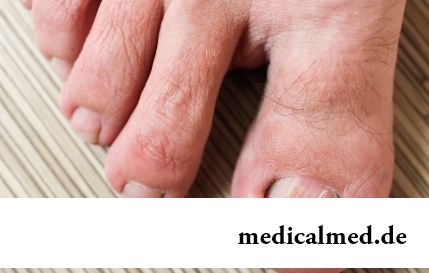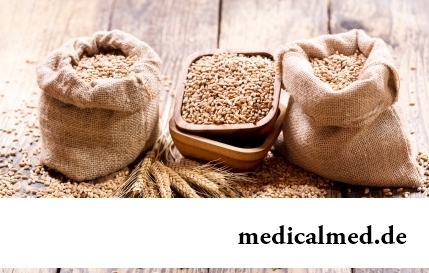





Diazepam
Application instruction:
 Diazepam – a tranquilizer of anxiolytic, sedative, anticonvulsant, central myorelaxation action.
Diazepam – a tranquilizer of anxiolytic, sedative, anticonvulsant, central myorelaxation action.
Form of release and structure
Drug is produced in the following dosage forms:
- Tablets: without cover, round, with the dividing line on one of the parties, white color (on 10 pieces in the blister, on 2 or 10 blisters in a cardboard box);
- Solution for injections: colourless transparent liquid (on 2 ml in dark glass ampoules, on 10 ampoules in a cardboard box).
Is a part of 1 tablet:
- Active ingredient: diazepam – 2, 5 or 10 mg;
- Auxiliary components: monohydrate of lactose, calcium stearate, K-25 povidone, potato starch.
Is a part of 1 ml of injection solution:
- Active ingredient: diazepam – 5 mg;
- Auxiliary component: benzyl alcohol (as the stabilizer).
Indications to use
States/diseases at which Diazepam use is recommended:
- Epileptic status;
- Sleep disorder, motor excitement of various etiology in psychiatry and neurology, an abstinence syndrome owing to an alcoholism;
- Neurosises, borderline cases with elements of tension, alarm, concern, fear;
- The spastic states connected with defeat back or a brain and also miozita, arthritises, bursitis with tension of skeletal muscles;
- Tetanus.
Diazepam is used at anesthesia for carrying out premedication before an anesthesia and/or as a component of the combined anesthesia.
In labor drug is shown for improvement of patrimonial activity, at premature delivery, and also in case of premature placental detachment.
Contraindications
- The expressed chronic hypercapnia;
- Heavy myasthenia;
- Alcohol or medicinal addiction in the anamnesis (except for acute abstinence);
- Hypersensitivity to drug components, and also other medicines of a benzodiazepine row.
In the I trimester of pregnancy use of Diazepam is contraindicated and is allowed only in urgent cases. It is important to consider that use of a tranquilizer at pregnancy can significantly change the heart rate (HR) of a fruit.
In obstetrics use of drug in the doses necessary for simplification of patrimonial activity, can cause a temporary hypomyotonia, a hypothermia, disturbance of breath in newborns (is more often at premature) as they did not completely create fermental system which participates in diazepam metabolism. For the same reason administration of drug is contraindicated to children up to 6 months.
If regular reception of means is necessary during a lactation, it is necessary to stop breastfeeding.
Route of administration and dosage
Diazepam, depending on a release form, is accepted inside, entered intramusculary, intravenously, rektalno.
The daily dose varies with the broad range of 0,5-60 mg. The single dose, frequency and duration of use are established individually.
Side effects
- Nervous system: drowsiness, muscular weakness, dizziness; seldom – a depression, confusion of consciousness, a vision disorder, a dysarthtia, a diplopia, a headache, an ataxy, a tremor; in isolated cases – paradoxical reactions (feeling of alarm, a hallucination, excitement, sleep disorders). After intravenous administration the hiccups can sometimes be observed. In case of prolonged use disturbances of memory and development of medicinal dependence are possible;
- Alimentary system: seldom – nausea, hypersalivation, dryness in a mouth, a lock; in isolated cases – jaundice, increase in activity of an alkaline phosphatase and transaminases in a blood plasma;
- Endocrine system: seldom – decrease or increase in a libido;
- Urinary system: seldom – an inkontinention (an urine incontience);
- Cardiovascular system: perhaps some lowering of arterial pressure at parenteral use;
- Respiratory system: in isolated cases – disturbances of breath at parenteral use;
- Allergic reactions: seldom – skin rashes.
Special instructions
It is necessary to observe extra care to patients with respiratory and heart failure, organic lesions of a brain (it is recommended to avoid parenteral administration), a myasthenia, closed-angle glaucoma and predisposition to it, and also it is long receiving anticoagulants, β-adrenoblockers, anti-hypertensive drugs of the central action, cardiac glycosides (it is preferential at the beginning of therapy).
At treatment cancellation the dose needs to be reduced gradually. In case of sudden cancellation of Diazepam after long use are possible: excitement, concern, spasms, tremor.
If during treatment development of paradoxical reactions, such as uneasiness is observed, acute excitement, hallucinations, sleep disorders, then Diazepam it is necessary to cancel.
After intramuscular injections increase in activity of enzyme of a kreatinfosfokinaza (KFK) in a blood plasma is possible, it should be considered when carrying out differential diagnosis of a myocardial infarction.
It is necessary to avoid intra arterial administration of solution.
To take alcohol during treatment it is inadmissible.
Because of ability of a tranquilizer to cause reduction in the rate of psychomotor reactions, patients who are engaged in potentially dangerous types of activity should show extra care.
Medicinal interaction
At simultaneous use of Diazepam with some medicines there can be following effects:
- Bupivacaine: increase in its concentration in a blood plasma is possible;
- Oral contraceptives: strengthening of effects of diazepam is probable; the risk of development of breakthrough bleeding is increased;
- Diclofenac: strengthening of dizziness is probable;
- Isoniazid: reduces diazepam removal;
- Caffeine: reduces sedative and probably anxiolytic influence of diazepam;
- Clozapine: respiratory depression, the expressed arterial hypotension, a loss of consciousness are possible;
- Rifampicin: increases diazepam removal as considerable is strengthened by his metabolism;
- Levodopa: decrease in protivoparkinsonichesky action is possible;
- The medicines exerting the oppressing impact on the central nervous system (CNS) (including neuroleptics, sedative, hypnagogues, opioid analgetics, anesthetics): the expressed arterial hypotension, and also the oppressing influence on TsNS and on a respiratory center increases;
- Lithium carbonate: there are data on coma development;
- Fluvoksamin: increases side effects and concentration in a diazepam blood plasma;
- Metoprolol: reduction in the rate of psychomotor reactions, deterioration in visual acuity are possible;
- Phenobarbital and Phenytoinum: diazepam metabolism acceleration is possible; in rare instances diazepam strengthens action and metabolism of Phenytoinum oppresses;
- Muscle relaxants: their action amplifies, the risk of developing of an apnoea increases;
- Paracetamol: reduction of removal of diazepam and its metabolite (dezmetildiazepam) is probable;
- The drugs causing induction of enzymes of a liver, including antiepileptic means (carbamazepine, Phenytoinum): are capable to accelerate diazepam removal;
- Risperidon: there are data on development of the malignant antipsychotic syndrome (MAS);
- Theophylline (in low doses): perverts sedative effect of diazepam;
- Tricyclic antidepressants (including with amitriptyline): increase in concentration of antidepressants and increase in cholinergic action, strengthening of their oppressing influence on TsNS is probable;
- Cimetidinum, омепразол, Disulfiramum: increase in intensity and duration of effect of diazepam is possible;
- Ethanol, etanolsoderzhashchy drugs: strengthen the oppressing influence on TsNS (preferential on a respiratory center), can cause a syndrome of pathological intoxication.
To patients who long time received β-adrenoblockers, anti-hypertensive drugs of the central action, anticoagulants, cardiac glycosides, it is impossible to predict mechanisms and extent of medicinal interaction.
Terms and storage conditions
To store in the place, dry, dark, unavailable to children, at a temperature not above 25 °C.
Period of validity – 3 years.
Drug for cough Terpinkod is one of leaders of sales, not because of the medicinal properties at all.

Cold is such painful that each sigh becomes a victory, heat "knocks" down, and the ache in joints forces to think only about...
Section: Articles about health
Cold, puffiness of a nose, itch, the watering eyes - characteristic symptoms of the allergic rhinitis resulting from hit of allergens (pollen, house dust, hair of animals, etc.) on a mucous membrane of a nose. Unpleasant feelings often deliver беспоко...
Section: Articles about health
White teeth and the Hollywood smile – a dream of many people. Long time was considered that the plaque on teeth and change of their color – destiny of those who incorrectly eat smokes and badly brushes teeth. But the paradox is available: at everything the variety of toothpastes, brushes existing today for toothbrushing and conditioners for a mouth the number of the people hesitating of a plaque on teeth does not decrease. Moreover, the plaque is formed even at small children who definitely do not smoke and have no coffee. So in what business, and опас...
Section: Articles about health
Life of the modern woman is very difficult. Opportunities to realize itself are wide: it not only education and career, but also most differently...
Section: Articles about health
The name of this disease precisely reflects the problem reason: it consists in the bra fastener pressure upon a certain zone of a back. At the same time one of vertebrae of chest department of a backbone is as if blocked and loses mobility, and falling on it is nude...
Section: Articles about health
Statistically, can only one of ten of our compatriots brag of a decent condition of an oral cavity. Six teeth affected with caries are the share of the average Russian. For comparison, this indicator for Europeans is almost six times less....
Section: Articles about health
More than a half of the married couples which faced prostatitis – leave. The new broadcast "Female View of Prostatitis" will help to learn...
Section: Articles about health
All diseases from nerves – in this joke a big element of truth, are said by doctors. Constant stresses lead to decrease in protective forces of an organism, and it becomes vulnerable for a set of diseases. It is wrong to think that the stress is a problem of the present. Life of people and hundred...
Section: Articles about health
What they, women? Beautiful, gentle, passionate and at the same time windy, gusty, and nervous. And what is stranger: have all these qualities of the woman at the same time. But here only the mood their time sharply changes on completely opposite: in the morning they laugh and joke, and in the evening cry or are irritated....
Section: Articles about health
You are office worker, the driver, the fan of winter sports or do not think of life without bicycle? You conduct a slow-moving image жизн...
Section: Articles about health
Diapers for adults – individual one-time means of hygiene which in some situations is irreplaceable and from such situations any person is not insured. Though nobody perceives need of their use with enthusiasm, however without it to a sra...
Section: Articles about health
According to data of World Health Organization, the cataract is diagnosed almost for 7% of the population of Earth. The statistics of incidence is considered not full as at an initial stage the illness, as a rule, does not cause to the person of special inconveniences, and many diseased sees doctors not at once. The cataract is not only one of the most widespread ophthalmologic illnesses, but also the reason of a half of cases of loss of sight....
Section: Articles about health
The pancreas performs two functions in a human body: release of enzymes without which digestion carbohydrate is impossible...
Section: Articles about health
Statistically, pathologies of a thyroid gland in the world more than 500 million people have. Failures in work of this body lead to heavy disbolism, development of heart diseases, vessels, a reproductive and nervous system. In hard cases excessive...
Section: Articles about health
Very often as a source of the infection which caused a disease serves our house - the place which a priori has to be safe. However disease-producing bacteria can perfectly feel not only in insanitary conditions, but also in our apartment if not to carry out due care of favourite places of their dwelling. What they − sources of their reproduction? Let's consider 10 most widespread places in our house, the most dangerous from the point of view of infection with microorganisms....
Section: Articles about health
Life does not indulge the modern woman special emotional comfort and carelessness. Fatigue, troubles at work, misunderstanding...
Section: Articles about health
To look healthy and means well-groomed not only to be pleasant to people around, but also to feel strong, sure and taken place. Specialists in the field of cosmetology quite often note that whether not all women are able to look after skin...
Section: Articles about health
Neurosis is called pathology of a nervous system at which deviations in functioning of the highest nervous processes are observed. Most often - owing to yet not strengthened mentality - children are subject to neurosises. The unhealthy, hostile atmosphere in collective, a family, the strong and sharp shock, and also a set of other factors which negatively influence the little person who did not learn to overcome stresses yet can become premises to emergence of such disturbances....
Section: Articles about health
Radiological methods of a research are applied in medicine more than hundred years, and thanks to them millions of lives were saved. In m...
Section: Articles about health
The word "onikhokriptoz" is unfamiliar to most of people, meanwhile quite so physicians call very widespread problem: the growing of edge of a nail into surrounding fabrics causing inflammatory process. Usually the illness affects thumbs of legs, and is followed покр...
Section: Articles about health
Smoking not only exerts a negative impact on the state of health of the consumer of tobacco products, but is an air polluter the substances potentially dangerous to people around. In recent years significantly the number of the people aiming to get rid of an addiction increased. Business this difficult: having left off smoking, the person immediately begins to suffer from abstinence. Besides, many yesterday's smokers feel at first great disappointment as улучш...
Section: Articles about health
The state of health of the person depends on many factors. One of the most important is the constant but which is not exhausting, motive...
Section: Articles about health
The concept "gluten" (differently, a gluten) combines group of the proteins which are a part of rye, barley and wheat. For most of people the use of the food stuffs containing a gluten not only is safe, but also it is very useful. Nevertheless, there is a number the myth...
Section: Articles about health
Diseases of joints often begin imperceptibly for the person. The first stages of destruction of the cartilaginous tissue providing soft and free sliding of heads of bones in joint bags proceed slowly and absolutely without serious consequences. Especially unpleasantly for the fact that this process is not connected with advanced age: degradation of joint surfaces is, as a rule, noticeable after 30 years. It means that practically each able-bodied person at any time can face sad results...
Section: Articles about health
Nightmares belong to the most unpleasant frustration. Statistically, they happen at 4% of adults, and almost at 70% of children and...
Section: Articles about health
Doctors claim that the people not so familiar with a dorsodynia occur among adult Russians very seldom. At the same time the vast majority of the patients who are periodically testing this indisposition do not hurry to ask for medical care at all. With one St...
Section: Articles about health
Turnip, radish, horse-radish – once these and other products enjoyed wide popularity at our ancestors, being not only the food sating an organism but also the medicines curing of many diseases. Unfortunately, the use of some of them got out of fashion long ago, and once favourite plants and vegetables almost ceased to make a contribution to human health. Inclusion of such products in a modern diet − an effective measure of prevention and treatment of diseases which seldom suffered...
Section: Articles about health
